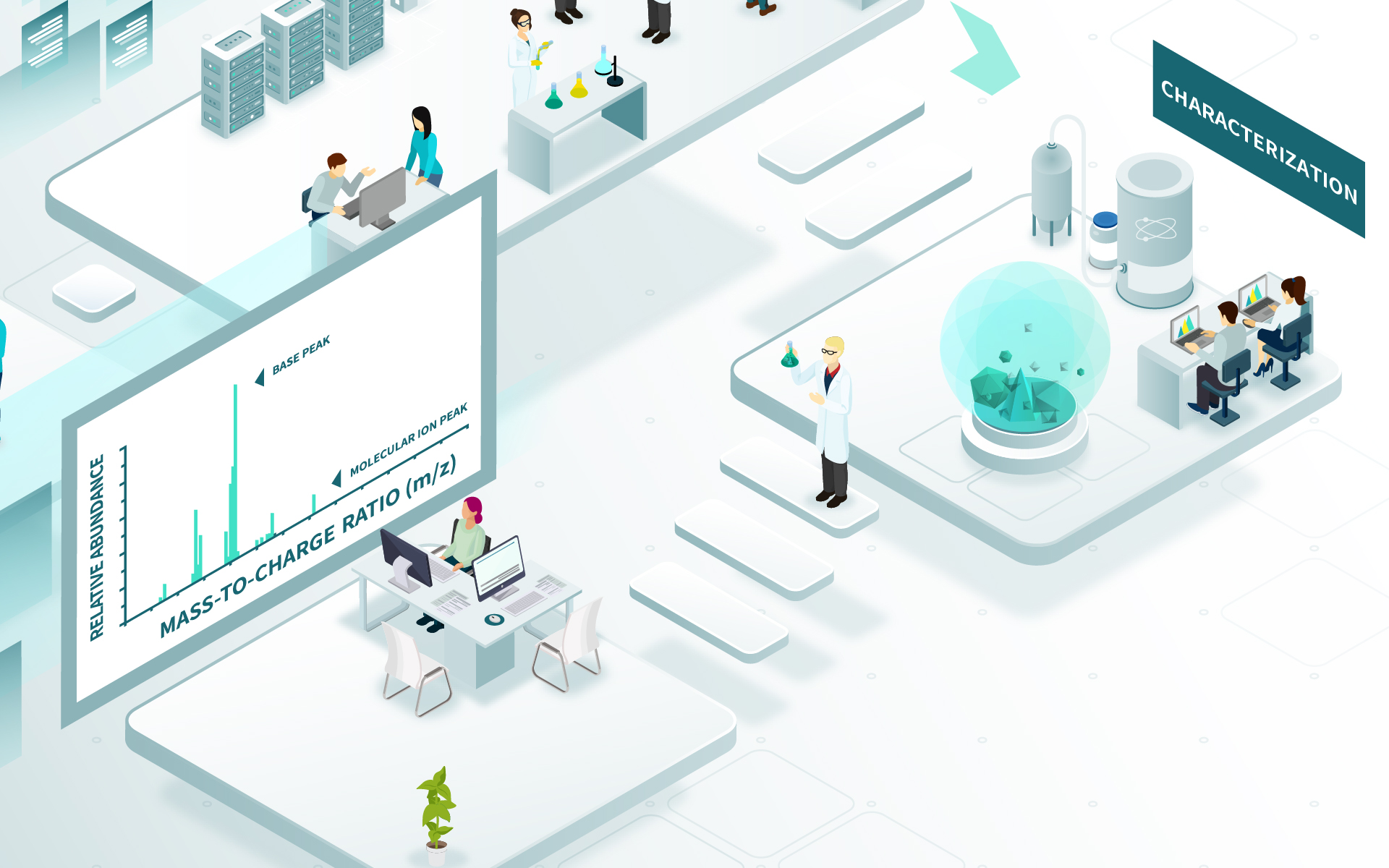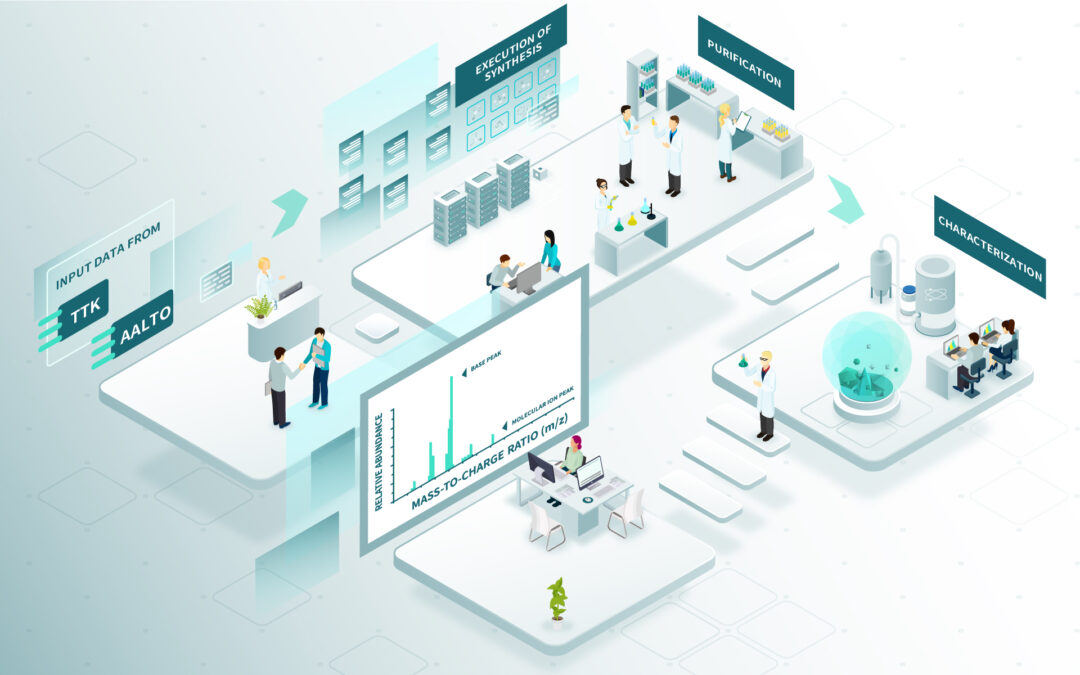The JYU research team is involved in chemical synthesis of selected bioinspired molecules for redox flow batteries. The molecules have been identified in Steps 1 and 2 by TTK and Aalto. The most important property that guides the selection of molecules to be synthesized is the redox potential.
In planning the synthetic route to the molecule, we will first sketch the route on paper or computer and then check for examples of similar reactions in the literature using a reaction database. This helps in understanding how other researchers have carried out similar reactions in the past, and may also suggest that there are problems with the planned route.
The planned route is then tested in the laboratory. We purchase the starting materials from commercial suppliers, and test the first reactions in a small scale. The starting materials are introduced to the reaction vessel, allowed to react, and the product is then isolated and separated from other reaction components. Finally, the impure products are purified and separated from each other.

For purification, we use commercial column chromatography packages. Sometimes we are also able to purify the compounds by recrystallization.
After purification we will check the identity and purity of the product by characterization with various instruments, such as nuclear magnetic resonance (NMR) and mass spectrometry. These techniques allow us to ensure that we have a correct molecular structure, and they will also give an indication of the purity of the product.
In many cases, the first attempts at chemical synthesis will fail to provide the expected product. We will then analyze the situation and come up with alternative synthetic methods, and test them, until we reach a successful route to the desired molecule. We will then be able to scale up the synthesis so that sufficient amounts of material is available for electrochemical and stability tests.


